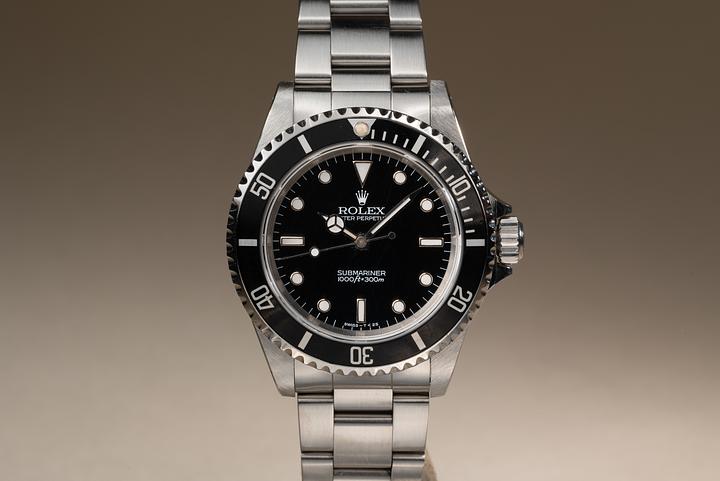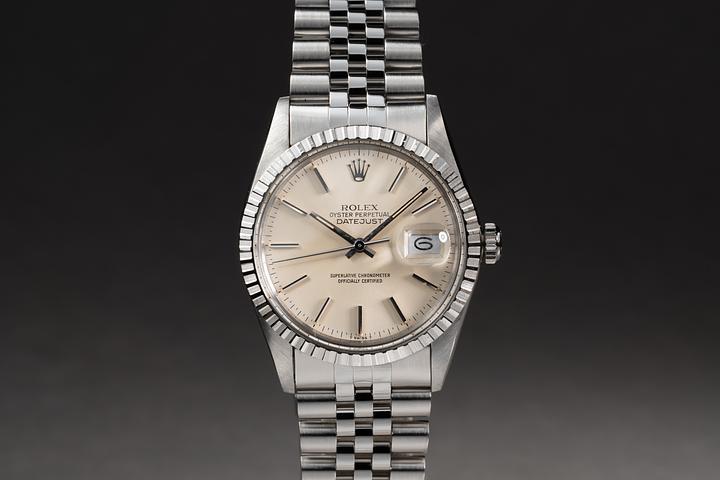How to Change the Date on a Rolex Without Messing It Up
.jpeg)
How to Change the Date on a Rolex: A Detailed Guide from the Heart of Swiss Watchmaking
So you’re staring at your Rolex wondering, “Why is it saying the 29th when it’s clearly the 1st?” Or maybe daylight saving time just threw off your whole schedule and now your watch is out of step. Whatever the reason, if you're asking how to change the date on a Rolex, you're definitely not alone. Adjusting a Rolex isn't difficult, but like all things worth doing — there’s a right way and, well, a not-so-right way. And when it comes to an iconic piece of Swiss craftsmanship like a Rolex, you really want to stay on the right side of doing things. Whether you're new to the world of fine horology or just need a refresher, let’s take a focused walk (and occasional meander) through exactly how and when to set the date on your Rolex.
The Swiss Legacy Behind the Crown
Rolex isn’t just a watch. It’s a statement, a legacy, and okay — yeah — it’s also a finely tuned machine with a lot of complexity under that gleaming dial. Founded in 1905 by Hans Wilsdorf, Rolex has carved out its place as one of the most meticulous and forward-thinking brands in the Swiss watchmaking universe. That precision doesn't end with its movement; it's built right into how you interact with the timepiece itself. Changing the date on a Rolex is a small part of that story, but it tells you everything about how delicately precise these watches are. Understanding how your Rolex operates — especially when it comes to date-setting — means understanding a little about Swiss engineering and a lot about why things are built the way they are.
Understanding Your Rolex Movement
Okay, quick intermission while I grab more coffee… alright back. Let’s get into the mechanics. Not all Rolexes are built the same on the inside. You’ve got movements that vary depending on the model — some have the date-only complication (like the Oyster Perpetual Date), while others boast the famous Day-Date or GMT functions. Most modern Rolex models that display the date feature what’s called a “Quickset” function. Introduced in the late 1970s with the caliber 3035 movement, the Quickset function allows you to set the date separately from the time. Game changer. If your Rolex has a Quickset (and chances are, if it was made after 1980, it probably does), you’re in luck — changing the date just got simpler. If, however, your watch predates this — like the vintage Submariners or earlier Datejusts — you’ll be doing a little more winding around the dial to get to your desired date. Not hard, just a bit more time-consuming.
The Right Way to Change the Date
Here we go — the meat of the matter. Before you even begin adjusting your Rolex, make sure it’s not in what watchmakers call the “danger zone.” This is roughly between 9 PM and 3 AM; during these hours, the gears are engaged in switching over the date automatically. If you try to manually change the date at this time, you might — unintentionally — damage the gears. It’s kind of like trying to change lanes while your car is already mid-turn. No good comes of it. So, pull your crown out to the first position (on most modern Rolexes, that’ll be the Quickset position). Turn the crown clockwise — always clockwise — until the correct date appears in the window. If you need to adjust the time as well, pull the crown out to the second position. Turn it past midnight so the date ticks over — that way, you’ll know if it's AM or PM. Return the crown to its normal position, screw it back down tightly (they’re waterproof for a reason), and you’re good to go.
Common Mistakes to Avoid
Now, listen, it’s easy to get excited fiddling with your Rolex. But pause. Be gentle. One of the most common issues that lands these watches in service centers is enthusiastic mishandling of the crown or forcing the date change when the watch is still within the date shift zone. I’ve seen it — someone pulling hard on a crown that doesn’t want to budge, thinking it just needs more juice. Nope. That “stickiness” is usually a sign you’re within that 9 PM to 3 AM window. Best thing? Wait it out. Also, avoid changing the date daily unless you need to. Excessive manipulation — especially on older models without the Quickset — could wear down the internal components over time. They’re durable, sure, but not invincible. Maintenance matters, and a gentle hand goes a long way.
Servicing and Longevity Tips
While we’re on the topic, let’s talk longevity. Changing the date correctly is part of maintaining your Rolex, but a regular service schedule is just as crucial. Rolex recommends servicing your watch about every 10 years, but depending on your usage — exposure to dust, moisture, extremes of temperature — you might want to visit your Authorized Service Center a little more often. And while you’re there, they can lubricate the movement, check for any wear and tear, and recalibrate it. These timepieces are built to last generations, but only if they’re looked after with the same precision that goes into their assembly. Worth mentioning, in case you're wondering: yes, changing the date when done correctly doesn’t count as wear-and-tear. So don’t stress doing it right.
Final Thoughts: Adjusting the Date with Confidence
So yes, changing the date on your Rolex is a small act — but it’s one layered with intentional design, steeped in Swiss engineering tradition, and frankly, it deserves a little reverence. Not because it’s difficult per se — but because when you own a Rolex, you’re holding a hand-polished, hand-assembled piece of horological heritage on your wrist. You adjust it not because it’s broken, but because its precision responds to precision in return. Take your time. Avoid the danger zone. Learn your model’s movement. And above all, when in doubt, turn clockwise. In the end, the more you engage with your Rolex the way it was meant to be handled, the more intuitive it becomes. Kind of like learning the rhythm of a new conversation — once you get the flow, you’re fluent.




